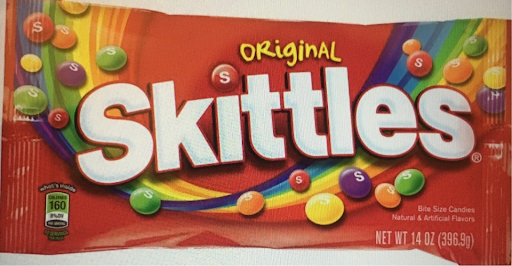What’s in your food?: Skittles

The vibrant colors of Skittles may not be so bright after all. In order to achieve the look of this classic candy, Mars uses a chemical additive called titanium dioxide. While the additive makes the Skittles look more appealing, this toxic, white powder does more harm than good.
So what is titanium dioxide? Titanium dioxide is a powder that is often used in paint, cosmetics, paper, plastics, and in this case, food. The substance is listed as a carcinogen, meaning it should be handled with caution and can irritate the eyes, nose, throat and lungs.
Despite how dangerous titanium dioxide sounds, the Food and Drug Administration deems the chemical additive safe for human consumption. Numerous pet retailers, though, have banned the use of the toxin in their pet foods. Titanium dioxide has also been banned in Europe by the European Food Safety Authority.
In 2016, Mars said they would be removing all artificial colors from their candies, including Skittles, in the next five years. Under this announcement, they pointed out that titanium dioxide was among these artificial colors that were to be removed. Presently, in 2022, the artificial colors and titanium dioxide remain in their products.
Even though Mars continues to use the chemical additive in Skittles, it is not necessary to achieve the bright coloration. Their other products like Swedish Fish, Sour Patch Kids and Nerds are all colorful, but do not contain the toxin. One can theorize that Mars continues to use the substance due to the fact that titanium dioxide expands the shelf life of Skittles.
Studies have shown that even small quantities of titanium dioxide add to the risk of pathological lesions of the kidneys, spleen, liver, and brain. Overall though, titanium dioxide won’t be detrimental to lovers of Skittles.
So, you should be safe picking up your favorite candy the next time you’re at the store.

Hi, I’m Hazel Buro, and I am the School News Editor this year. I am a senior this year, and I am involved in FBLA, National Honor Society, student council...








